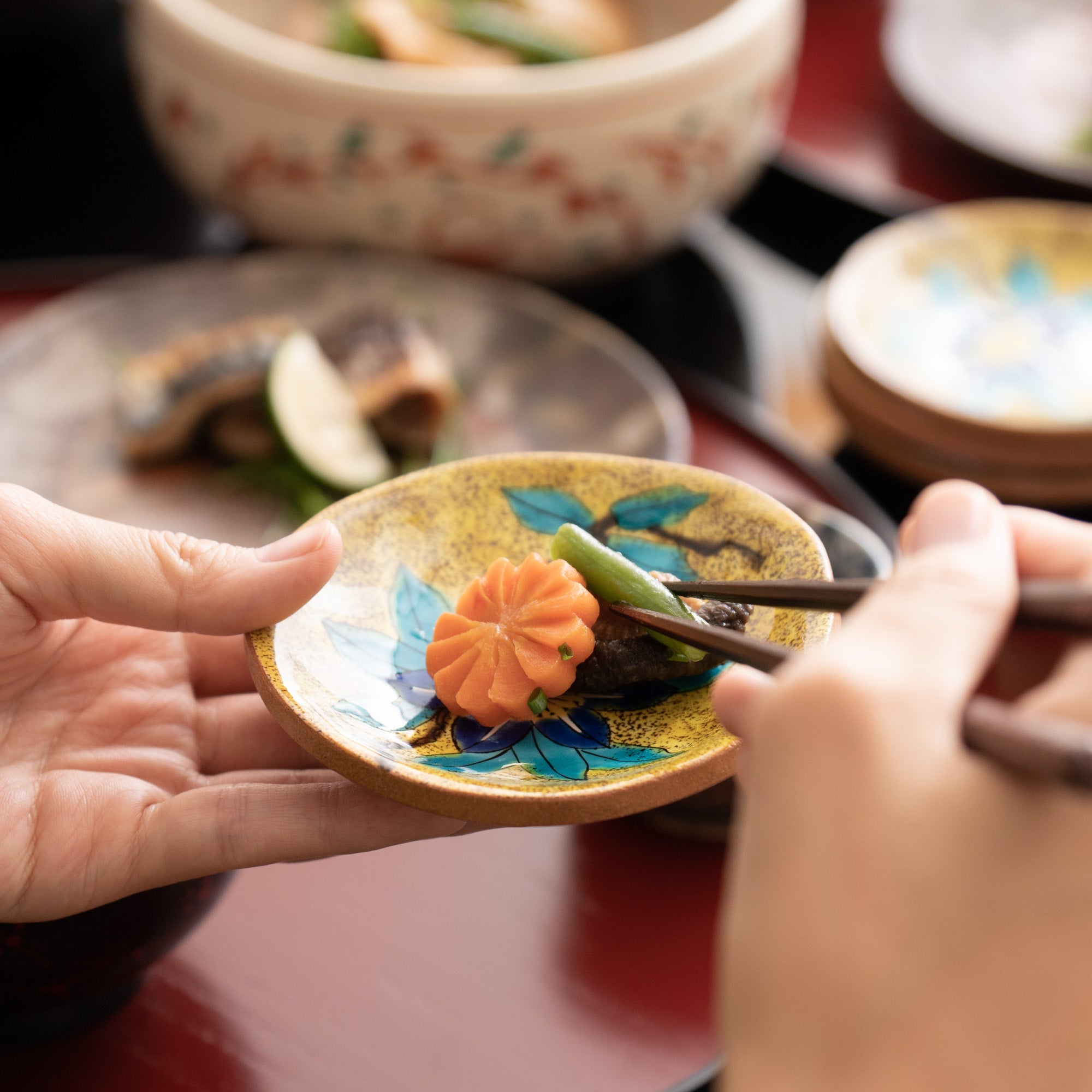











Yoshidaya Clematis Kutani Sauce Plate Set
Estimated Shipping Widget will be displayed here!
This is an elegant set of five sauce plates, exquisitely crafted in the vibrant Yoshidaya style, a celebrated tradition within Kutani ware. Unusually for Kutani ware, which is commonly made of porcelain, these plates are made from stoneware. The sides and the back of the plates retain the natural texture of unglazed clay.
The overglaze painting depicts the clematis in multiple layers, adding depth and dimension to the design. The clematis flower, which was introduced to Japan during the Edo period (1603 CE – 1868 CE), is a commonly used motif in Kutani ware. It carries the symbolic meanings of noble virtues, a beautiful heart, and deep compassion.
Perfectly sized as a sauce plate. They are also versatile to serve cheese, nuts, condiments, and other small food. Or you may put a small portion of food or relishes on this plate and set it on a larger plate or into a bento box for a more stylish and sophisticated food presentation.
The traditional design is sure to make an impression on anyone, which makes it an extraordinary gift for yourself or your loved ones.
PRODUCT DETAIL
- Quantity: 5 plates
- Dimension: D10.6cm(4.2in) x H2cm(0.8in)
- Material: Stoneware
-
Origin: Made in Japan - Kutani ware
FEATURES
YOSHIDAYA STYLE
Yoshidaya style, one of the most celebrated traditional styles of Kutani ware, was pioneered by Yoshidaya Denemon in 1824. This style distinguishes itself by using an exclusive palette of four colors—yellow, green, navy blue, and purple—while deliberately avoiding red. The designs are intricate, featuring a main motif set against a background pattern and expressed through layers of overglaze to create a sense of depth and complexity.
Choose options












Estimated Shipping Widget will be displayed here!
International Shipping
Multiple International Shipping Options
Discounted shipping for over 500000!
Free shipping for over 5000000!
Insured shipping service
Full compensation for any damage during transit.
Made by Japanese craftsmen
Fair Pricing, free Furoshiki wrapping!

